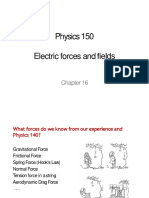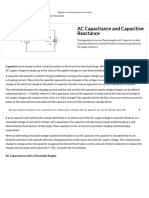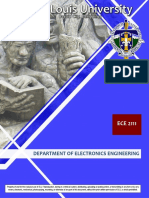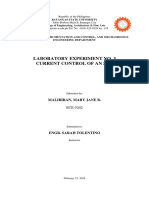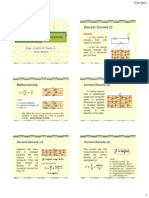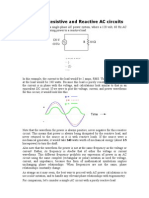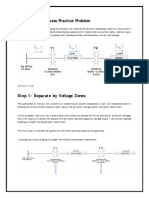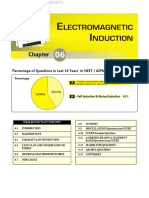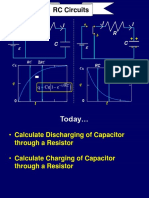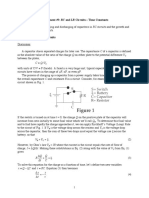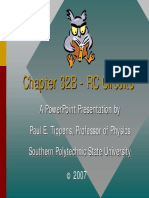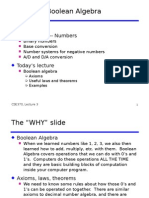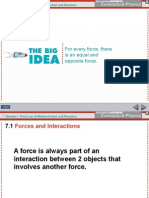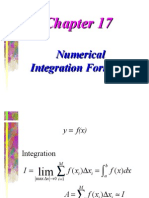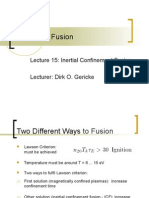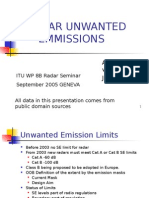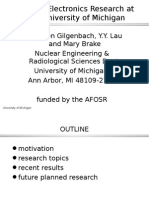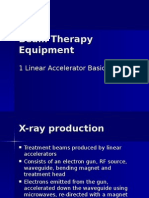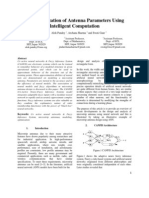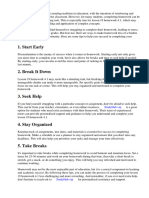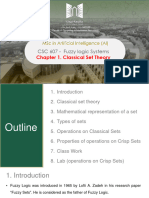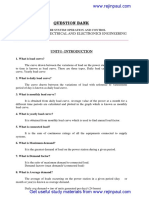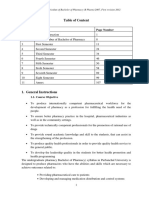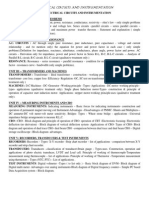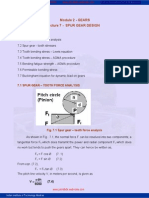RC Circuits
AP Physics C
Montwood High School
R. Casao
�RC Circuits
To
date, we have studied steady-state direct
current circuits in which the current is
constant.
In circuits containing a capacitor, the current
varies over time.
When a potential difference is applied across
a capacitor, the rate at which the capacitor
charges depends on the capacitance and on
the resistance in the circuit.
An RC circuit can store charge and release it
at a later time.
�Charging a Capacitor
Consider a series circuit
containing a resistor and
a capacitor that is initially
uncharged.
With switch S open, there
is no current in the circuit.
When switch S is closed at
t = 0 s, charges begin to
flow and a current is
present in the circuit and
the capacitor begins to
charge.
�Charging a Capacitor
The gap between the capacitor plates
represents an open circuit and charge does
not pass from the positive plate to the
negative plate.
Charge is transferred from one plate to the
other plate through the resistor, switch, and
battery until the capacitor is fully charged.
The value of the maximum charge depends
on the EMF of the battery.
Once the maximum charge is reached, the
current in the circuit is zero.
�Charging a Capacitor
Applying Kirchhoffs loop rule to the circuit
after the switch is closed:
E I R Vcapacitor 0
q
E IR 0
C
I R is the potential drop across the
resistor.
q/C is the potential drop across the
capacitor.
I and q are instantaneous values of the
current and charge as the capacitor
charges.
�Charging a Capacitor
At
t = 0 s, when the switch is closed, the
charge on the capacitor is 0 C and the
initial current is: E
I max
At
t = 0 s, the potential drop is entirely
across the resistor.
As the capacitor is charged to its
maximum value Q, the charges quit
flowing and the current in the circuit is 0 A
and the potential drop is entirely across
the capacitor.
�Charging a Capacitor
charge: Q max C E
From t = 0 s until the capacitor is fully
charged and the current stops, the
amount of current in the circuit
decreases over time and the amount of
charge on the capacitor increases over
time.
To determine values for the current in
the circuit and for the charge on the
capacitor as functions of time, we have
to use a differential equation.
Maximum
�Charging a Capacitor Current
Equation
Beginning
with Kirchhoffs loop
equation, differentiate the equation
with respect
toqtime:
d E I R
C
0
dt
dE
0
dt
d I R
dI
R
dt
dt
dI 1 dq
R
0
dt C dt
q
d
C 1 dq
dt
C dt
1 dq
dI
R
C dt
dt
�Charging a Capacitor Current
Equation
Replace
dq/dt with I:
1
dI
I R
C
dt
I
dI
R
C
dt
Get
the current terms on one side of
the equation and the other terms on
the other side of the equation:
dI
-1
dt
I
R C
Integrate
both sides of the equation.
�Charging a Capacitor Current
Equation
The
limits of integration for the current
side of the equation is from Imax (at t =
0 s) to the current value at time t.
The limits of integration for the time
side of the equation is from t = 0 s to
time t.
Imax
t
dI
-1
dt
I
R C 0
�Charging a Capacitor Current
Equation
Left
side:
1
I
I
I dI ln I I ln I ln I max ln
I
I max
I
max
Right
max
side:
t
1
1
1
t
dt
t0
t 0
R C 0
R C
R C
t
R C
�Charging a Capacitor Current
Equation
Combining
both sides of the
integration:
I
t
ln
Imax
R C
To
eliminate the natural log term (ln),
we can use the terms as exponents
x
for the base e.e lnFrom
x the properties of
logarithms:
I
t
t
ln
I max
R C
simplifies to
I max
R C
�Charging a Capacitor Current
Equation
Current
in an RC circuit as a function of
time:
I(t) I max e
Graph
t
R C
E
e
R
t
R C
of Current vs. time for a
charging capacitor:
�Charging a Capacitor Charge
Equation
To
find the charge on the capacitor as
a function of time, begin with
Kirchhoffs loop equation:
E I R Vcapacitor 0
Replace
q
E IR 0
C
I with dq/dt:
dq
q
E R 0
dt
C
�Charging a Capacitor Charge
Equation
Get
the dq/dt term on one side of the
equation: dq
q
dt
Divide
R E
both sides by R to solve for
dq/dt:
dq E
q
dt R R C
RC: E C q
dq E Cdemominator,
q
dq
dt R C R C
dt
R C
Common
�Charging a Capacitor Charge
Equation
Multiply both sides by dt:
EC q
dq
dt
R C
Divide both sides by EC-q to get the charge
terms together on the same side of the
equation:
dq
dt
EC q
R C
In problems involving capacitance, q is
positive, so multiply both sides by 1 to make
dq
1
the charge positive:
dt
EC q
R C
�Charging a Capacitor Charge
Equation
Integrate
both sides of the resulting
differential equation.
For the charge side of the equation, the
limits of integration are from q = 0 at t =
0 s to q at time t. I rearranged the
equation to put the positive q first
followed by the negative EC.
For the time side of the equation, the
limits of integration are from 0 s to t.
dq
-1
t
0
dt
0
q EC
R C
q
Charging a Capacitor Charge
Equation
Left side:
dq
q
ln q E C 0 ln q E C ln 0 E C
0
q EC
q
q EC
ln q E C ln E C ln
EC
1
1 t
1 t
dt
0 dt
t 0
0
R C
R C
R C
1
t
t 0
R C
R C
Right side:
�Charging a Capacitor Charge
Equation
Combining
both sides of the integrals:
q EC
t
ln
EC
R C
To
eliminate the natural log term (ln),
we can use the terms as exponents for
the base e.
q EC
ln
EC
t
R C
�Charging a Capacitor Charge
Equation
Simplify:
Solve
q EC
e
EC
t
R C
for q:
Multiply both sides by EC.
Add EC to both sides.
q EC ECe
Factor
out the EC:
t
R C
t
R C
q E C (1 e )
�Charging a Capacitor Charge
Equation
Substitute:
Qmax = EC
t
R C
q(t) Q max (1 e )
Graph
of Charge vs. time for a
charging capacitor:
�Charging A Capacitor
Current has its
maximum
value of I max =
E/R at t = 0 s
and decays
exponentially
to 0 A as t
infinity.
�Charging A Capacitor
The charge on
a capacitor is
0 C at t = 0 s
and
approaches a
maximum
value of Qmax
= CE as t
infinity.
�Charging Capacitor Graphs
current
charge
voltage
�Time Constant RC
The quantity RC, which appears in the exponential
component of the charge and current equations is
called the time constant of the circuit.
The time constant is a measure of how quickly the
capacitor becomes charged.
The time constant represents the time it takes the:
current to decrease to 1/e of its initial value.
charge to increase from 0 C to CE(1-e-1) =
0.63CE.
The unit for the time constant is seconds.
F = (V/A)(C/V) = C/(C/s) = s
�Charge and Current during the
Charging of a Capacitor
Qmax q
0.63 I
Capacito
r
Rise in
Charge
Time, t
Capacitor
Current
Decay
0.37 I
Time, t
In a time of one time constant, the
charge q rises to 63% of its maximum,
while the current i decays to 37% of its
maximum value.
�Discharging a Capacitor
Removing
the battery from the circuit
while keeping the switch open leaves
us with a circuit containing only a
charged capacitor and a resistor.
�Discharging a Capacitor
When
the switch is open, there is a
potential difference of Q/C across the
capacitor and 0 V across the resistor
since I = 0 A.
If the switch is closed at time t = 0 s,
the capacitor begins to discharge
through the resistor and a current
flows through the circuit.
At some time during the discharge,
current in the circuit is I and the
charge on the capacitor is q.
�Discharging a Capacitor Charge
Equation
To find the charge on the capacitor as a
function of time, begin with Kirchhoffs loop
equation. There is no E term in the equation
because the battery has been removed.
The IR term is negative because the energy
carried by the charges is dissipated in the
resistor.
I R Vcapacitor 0
q
IR
C
q
IR 0
C
�Discharging a Capacitor Charge
Equation
Replace
I with -dq/dt because the
current in the circuit is decreasing as
the capacitor discharges over time:
dq q
R
dt C
Get
the charge terms on one side of
the equation and the remaining
variables on the other side of the
dq
1
equation.
dt
R C
Discharging a Capacitor Charge
Equation
Integrate both sides of the resulting
differential equation.
For the charge side of the equation, the limits of
integration are from q = Qmax at t = 0 s to q at
time t.
For the time side of the equation, the limits of
integration are from 0 s to t.
Q max
Q max
dq t 1
0
dt
q
R C
1
1 t
dq
0 dt
q
R C
Q max
Discharging a Capacitor Charge
Equation
Left side:
1
dq ln q
q
q
Q max
ln q ln Q max
q
ln
Q max
Right side:
1 t
1 t
1
t
0 dt
t 0
t 0
R C
R C
R C
R C
�Discharging a Capacitor Charge
Equation
Combining
both sides of the integrals:
q
t
ln
Q max R C
To
eliminate the natural log term (ln),
we can use the terms as exponents for
the base e.
ln
Q max
t
R C
�Discharging a Capacitor Charge
Equation
Simplify:
Solve
q
e
Q max
t
R C
for q:
q t Q max e
t
R C
Discharging a Capacitor Current
Equation
To find the current on the capacitor as a
function of time, begin with the charge
equation.
t
q t Q max e
R C
Current I = dq/dt, so take the derivative of
the charge equation with respect
t to time:
R C
d Q max e
dq
dt
dt
Discharging a Capacitor Current
Equation
Left side:
dq
I
dt
Right side:
d Q max e
dt
e
d
dq
Q dt I
max
dt
t
d
-t
-t
1 dt
R C
R C
R C
Q max e
Q max e
dt
R C dt
- Q max R-tC
e
R C
-t
R C
-t
R C
�Discharging a Capacitor Current
Equation
Combining
the two sides of the
Q max
I
e
R C
integral:
t
R C
C V R C V
I t
e
e
R C
R
Qmax
= CV, substituting:
t
I t I max e
t
R C
t
R C
�Discharging a Capacitor Current
Equation
The
negative sign indicates that the
direction of the discharging current is
opposite to the direction of the
charging current.
The voltage V across the capacitor is
equal to the EMF of the battery since
the capacitor is fully charged at the
time of the switch is closed to
discharge the capacitor through the
resistor.
�Discharging Capacitor
Graphs
voltage
current
charge
��Bonus Equations!
I
have never seen these equations in
any textbook and had never been
asked to find the voltage across the
capacitor as a function of time. I got
these equations from the E & M course
I took Fall 06.
t
Discharging Capacitor:
q t Q max e RC E C RtC
V t
e
C
C
C
V(t) E e
t
R C
�Bonus Equations!
Charging
Capacitor:
Q max 1 e
q t
V t
C
C
V(t) E 1 e
t
R C
t
R C
t
E
C
1 e RC
�Energy Conservation in Charging
a Capacitor
During
the charging process, a total
charge Q = EC flows thru the battery.
The battery does work W = Q maxE or
W = CE2.
Half of this work is accounted for by
the energy stored in the capacitor:
U = 0.5QV = 0.5QmaxE = 0.5CE2
The other half of the work done by
the battery goes into Joule heat in the
resistance of the circuit.
� The rate at which energy is put into the
resistance R is:
dWR
2
I R
dt
Using the equation for current in a charging
capacitor:
t 2
2t
2
dWR E RC
e
dt
R
E
R
e RC
R
Determine the total Joule heat by
integrating from t = 0 s to t = :
2
WR
E
e
R
2t
R C
dt
t
2
Substitute: let x
, then dx
dt
R C
R C
R C
dt
dx
2
2
2t
R C
E
E
x R C
WR
e dt
e
dx
0 R
0 R
2
2
E R C x
WR
e dx
0
R
2
2
2
E C
E C
x
x
WR
e dx
e
o
0
2
2
E C
E C
0
WR
e e
0 1
2
2
2
E C
WR
2
The result is independent of the resistance R;
when a capacitor is charged by a battery with
a constant EMF, half the energy provided by
the battery is stored in the capacitor and half
goes into thermal energy.
The thermal energy includes the energy that
goes into the internal resistance of the battery.
�Capacitors and Resistors in
Parallel
The
capacitor in the figure is initially
uncharged when the switch S is
closed.
Immediately after the switch is closed,
the potential is the same at points c
and d.
An uncharged capacitor does not resist the
flow of current and acts like a wire.
No current flows thru the 8 resistor; the
capacitor acts as a short circuit between
points c and d.
Apply Kirchhoffs loop rule to the outer loop
abcdefa: 12 V 4 I0 = 0; I0 = 3 A
�After the capacitor is fully charged, no more
charge flows onto or off of the plates; the
capacitor acts like a broken wire or open in
the circuit.
Apply Kirchhoffs loop rule to loop abefa:
12 V 4 If 8 If = 0; 12 V 12 If; If = 1 A
�RC Circit Problem Example
You
will see this problem on your
homework.
� Charging:
When the switch S is first
closed and the current begins to move
through the circuit, it will move
through the 2 resistor onto the
capacitor.
Charge will move off of the capacitor
through the 22 to the battery.
No charge moves through the 18 or
38 resistor while the capacitor
charges.
� Once
the voltage across the 22 F
capacitor reaches its maximum
voltage, no additional charge will
move onto the capacitor and the
current in the circuit will now begin to
move through all four resistors.
The 18 and 22 resistors are in
series; total resistance = 40 .
The 2 and 38 resistors are in
series; total resistance = 40 .
� The
40 resistors are in parallel with
each other; total resistance of the
circuit:
1
40 40
1
Total
The
current:
20
VT 20V
IT
1A
RT 20
current in each branch is:
V
20 V
I
0.5 A
R
40
� The
voltage drop across the 18 resistor
is
V = 0.5 A18 = 9 V.
The voltage drop across the 2 resistor is
V = 0.5 A2 = 1 V.
The difference in
the voltage
between the two
points is equal to
the voltage across
the capacitor: 9V 1 V = 8 V.
� Check:
determine the voltage
difference between the 22 and the
38 resistor:
V38 0.5 A 38 19 V
V22 0.5 A 22 11V
= 19 V 11 V = 8 V
The difference in the voltage between
these two resistors is equal to the
voltage across the capacitor.
� Discharging:
when the switch S is
opened and the battery is removed
from the circuit, the capacitor will
discharge current I1 through the 18
and 2 resistors and current I2
through the 22 and 38 resistors.
The 18 and 2 resistors are in
series; total resistance = 20 .
The 22 and 38 resistors are in
series; total resistance = 60 .
The 20 and and 60 resistances are
in parallel with each other.
� Total
resistance:
1 1
RT 20 60
Time
15
constant = RC = 15 22 x 106 F = 3.3 x 10-4 s
From here, you can use the
discharging voltage equation to solve
for the time t.
t
RC
V t Vc e






